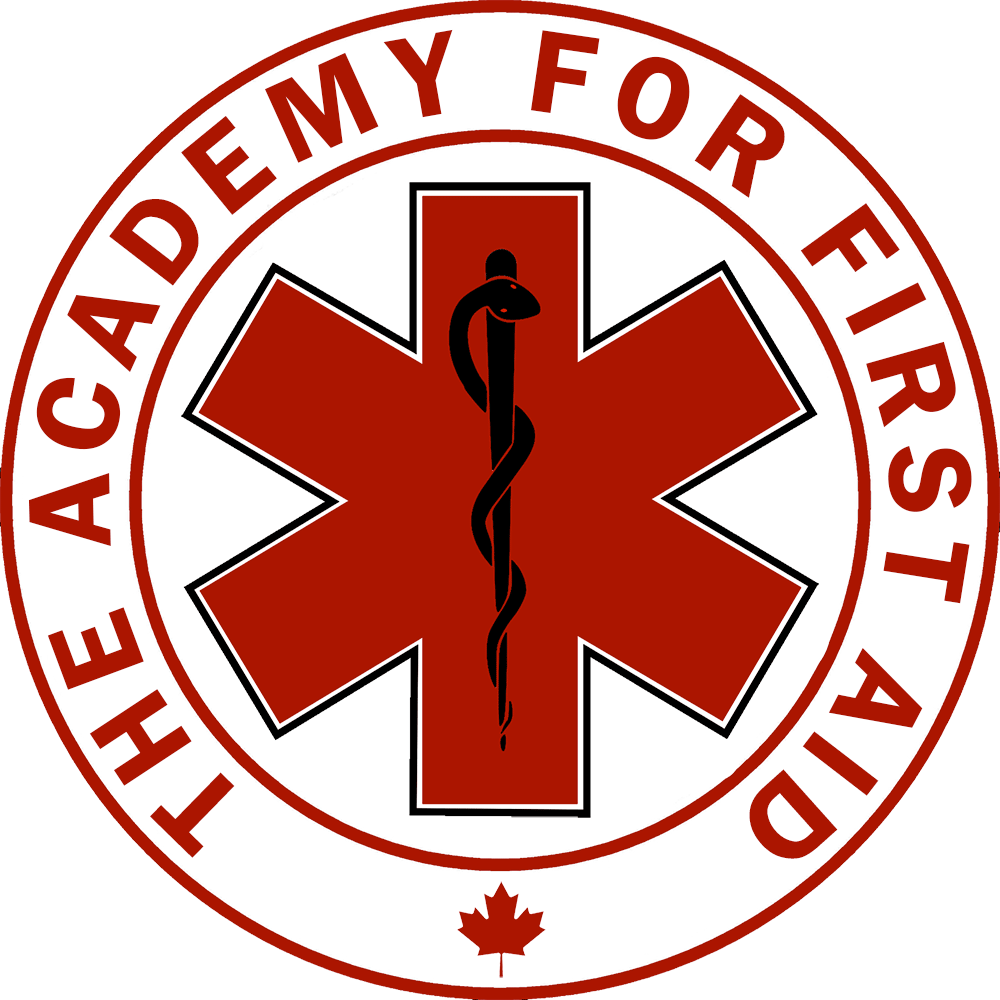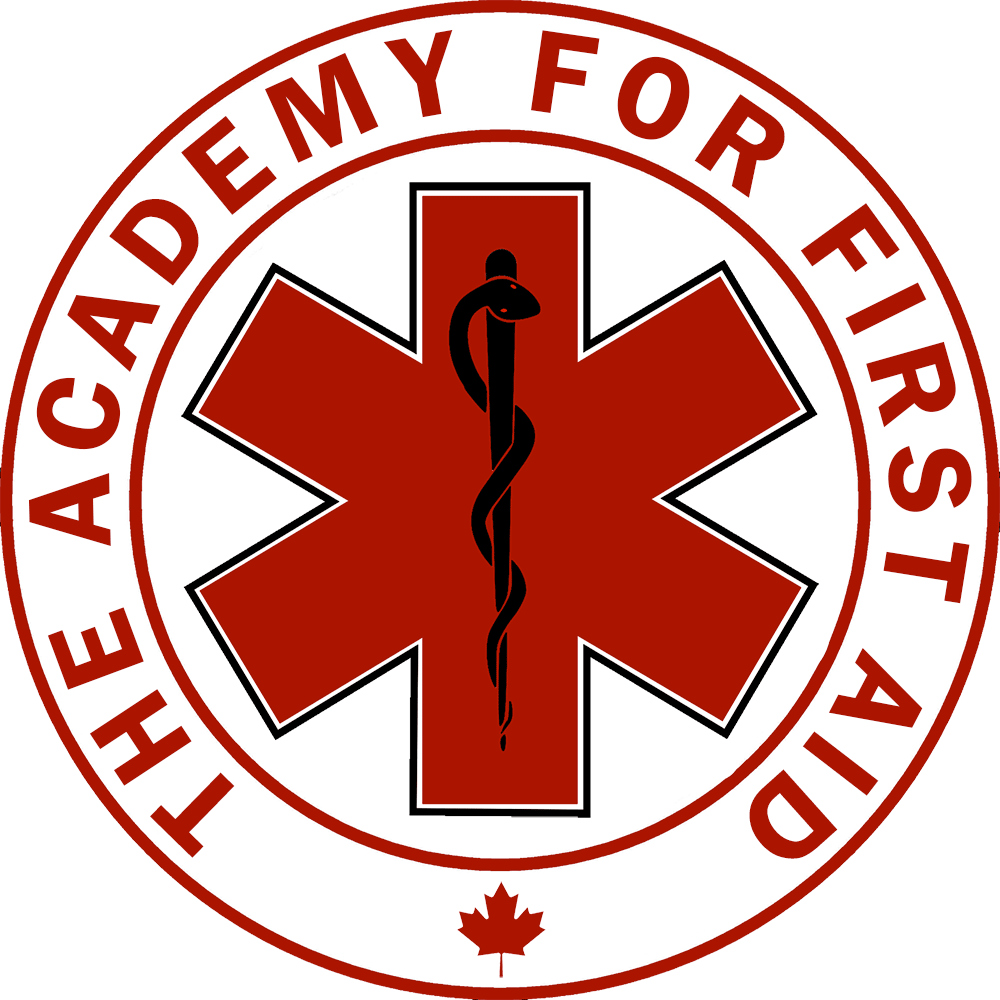- About Us:
- Toronto & Vaughan Courses:
- Brampton Courses:
- Hamilton Courses:
- Scarborough Courses:
- Barrie / Innisfil Courses:
- Mississauga Courses:
- BLS (HCP) Courses:
- Corporate Training (On-site group training):
- Contact:
basic life support training for
TORONTO PUBLIC HEALTH
The Academy for First Aid and Safety is a WSIB and CSA approved basic life support training provider for healthcare providers. Our knowledge and expertise providing critical care life support training is second to none. We are proud to be the selected training provider for Toronto Public Health in 2021 at The Metro Toronto Convention Centre’s mass vaccination clinic!
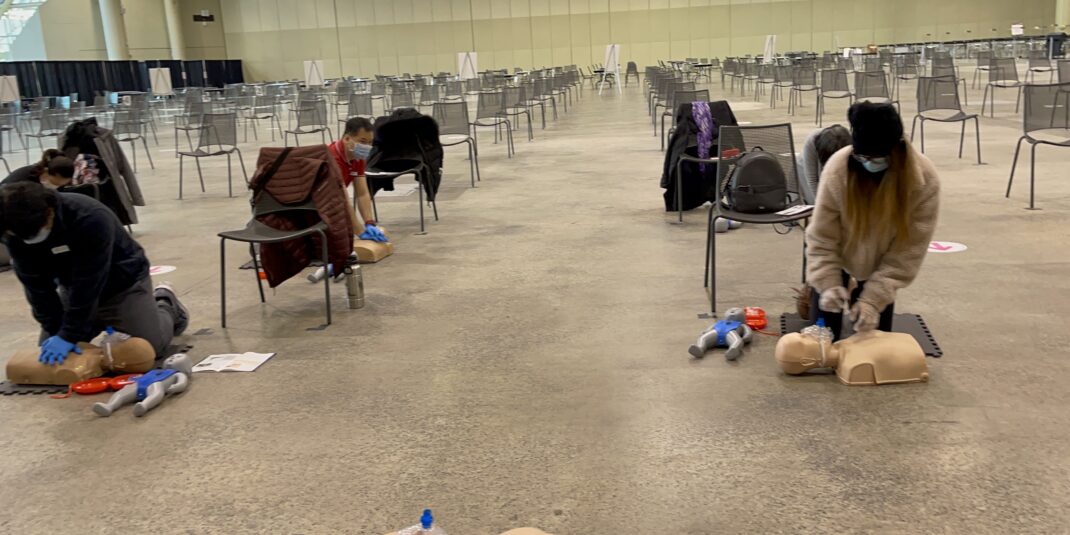
BLS at Metro Toronto Convention Centre: February 2021:
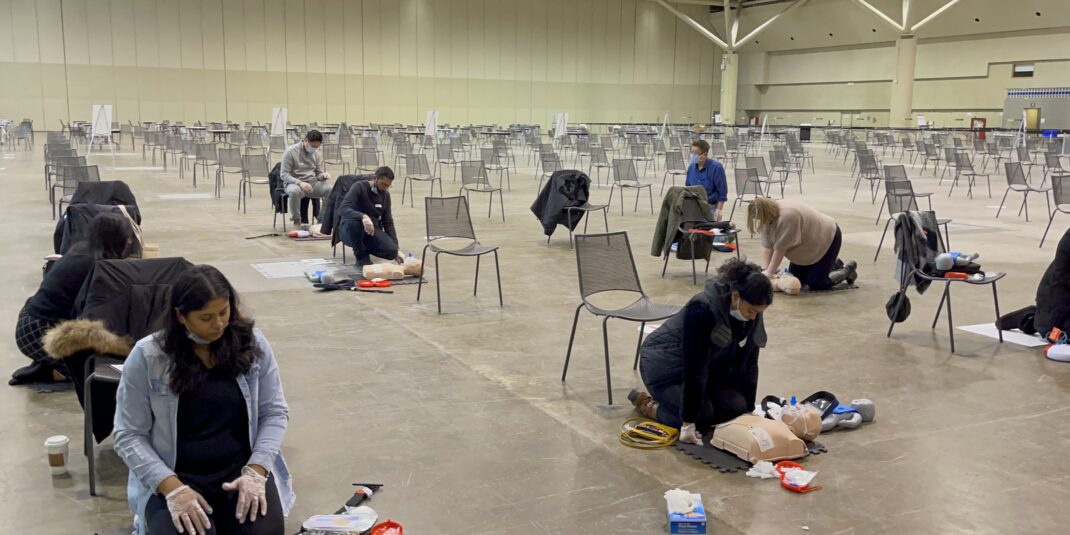
Basic Life Support for Toronto Public Nurses:
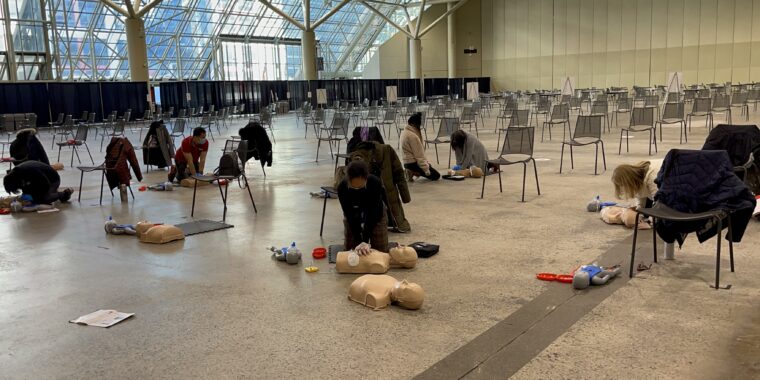
WSIB approved trainer for Basic Life Support (HCP):
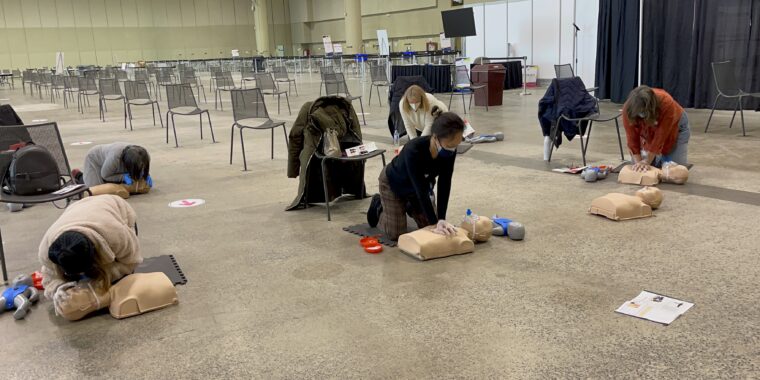
CPR with AED training for Toronto Public Health:
February 2, 2021
Are you a nurse, personal support worker, or first responder responsible for providing critical care? Are you a student at a community college or university seeking to get your proper CPR and basic life support certifications for your course prerequisites? If so, The Academy for First Aid and Safety wishes to invite you to any of our 4 locations across the Greater Toronto area to participate in our life support classes which are geared towards healthcare providers in the healthcare industry!
COURSE CONTENT BREAKDOWN:
-
CHAPTER ONE: INTRODUCTION TO BASIC LIFE SUPPORT: 10:00am-10:30am
One of the most important skills participants will learn is to understand what your role is in an emergency. This plays a critical role to ensure coordination, which ensures you and your team provides the best quality care in an organized and coordinated fashion. High performance CPR involves performing CPR with minimal to no interruptions. This ensures the highest chance for survival in a life threating situation.
-
CHAPTER TWO: BASIC LIFE SUPPORT SKILLS: 10:30am-12:00pm
In this chapter, participants will learn how to don and doff gloves to prevent disease transmission, a primary survey, chest compression ratio, an introduction to oxygen administration using a bag valve mask (or BVM), airway obstruction, and assisted ventilations during a respiratory arrest.
-
CHAPTER THREE: AIRWAY MANAGEMENT OPTIONAL 1/2 HOUR
Participants will learn how to open the airway using the cross finger (scissor) and tongue jaw lift technique, learn how to use adjuncts (oropharyngeal and nasopharyngeal) for a clear and unobstructed airway. For intubation, participants will learn how to insert a supraglottic airway if other airway management methods fail.
Fluid in the lungs can cause aspiration, so suctioning is taught to keep the airway clear of fluids that may interfere with breathing and a clear airway.
*****Please note that this chapter is an add-on and is not included in the BLS only course. -
CHAPTER FOUR: OXYGEN THERAPY: OPTIONAL 1 HOUR
Hypoxia and hypoxemia is a decrease in oxygen in the tissues and blood. If not corrected, it can lead to death. All participants will be taught to use a pulse oximeter to measure oxygen saturation in the blood as well as the heart beat rate. This will determine whether or not you should administer supplementary oxygen to bring the oxygen concentration up to normal levels. This can be achieved through the use of oxygen cylinders.
Participants will be taught how to set up and operate oxygen tanks, regulators, and select the proper type of oxygen delivery device based on their oxygen saturation level.
*****Please note that this chapter is an add-on and is not included in the BLS only course. -
BREAK 12:00pm-12:25pm
Break
-
CHAPTER FIVE: SPECIAL CONSIDERATIONS: 12:25pm-1:45pm
Nine special considerations are covered in this chapter:
1. Trauma: Stabilizing the patient to prevent further movement.
2. Hypothermia.
3. Opioid overdose: Naloxone training.
4. Anaphylaxis: Use of epipen.
5. Six rights of medication.
6. High performance CPR.
7. Post cardiac arrest care.
8. High performance team communication.
9. Post event debrief. -
END OF CLASS QUIZ: 1:45pm-2:00pm
Your quiz contains 20 questions and is multiple choice. A minimum of 75% is required to successfully pass the written quiz component of this class.
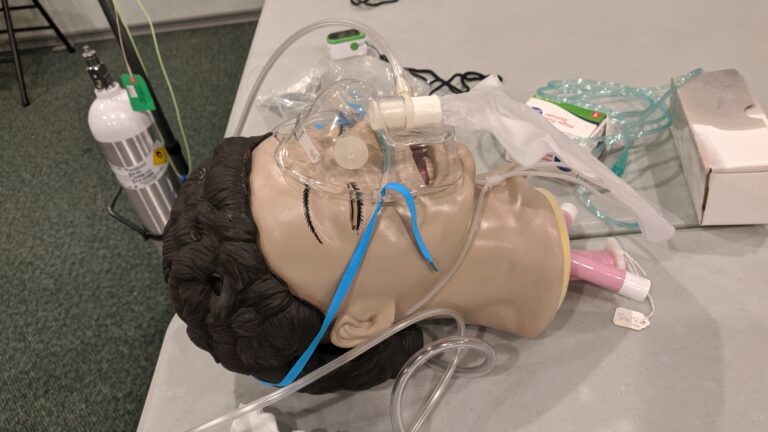
The Academy for First Aid and Safety is committed to provide unparalleled basic life support for our heroes during the Covid-19 pandemic. Our expertise and training is second to none.
The Academy for First Aid and Safety Follow
Why choose The Academy for First Aid and Safety for your basic life support (HCP) needs?
- WSIB and CSA approved basic life support provider!
- Canadian Red Cross certification!
- Instructors are all Red Cross certified!
- Modern training equipment: all CPR mannequins have light sensor feedback!
- 3 locations to serve you!
- 2000 square foot training rooms for social distancing!
- Toronto facility is a Covid-safe facility with plexiglass barriers!
BASIC LIFE SUPPORT
Healthcare provider course (HCP)-
1 day 4 hour course
-
Canadian Red Cross certificate
-
Available in Toronto and Brampton
BASIC LIFE SUPPORT
With Standard First Aid-
2 day course
-
Canadian Red Cross certificate
-
Available in Toronto and Brampton
